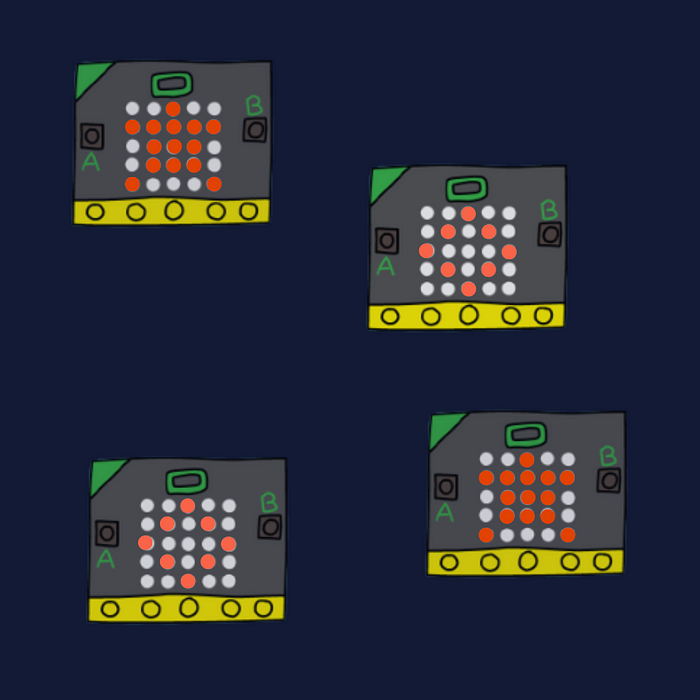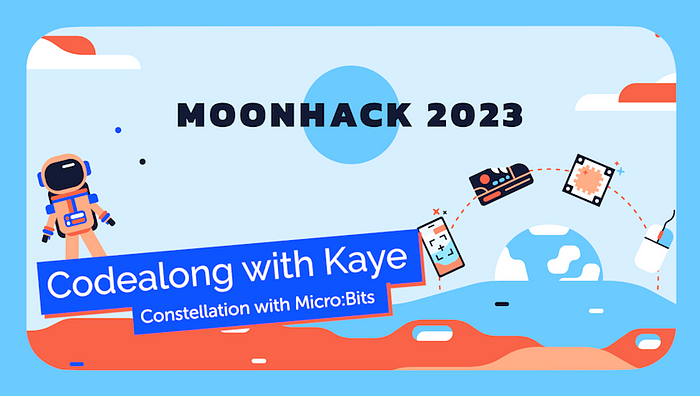Constellation — a Moonhack project 2023
LED stands for Light Emitting Diode. These were first patented in 1961, but have been documented in research dating back to the 1920s. Electroluminescence, the natural phenomena that LED technology was built, dates back to 1907, when scientists were experimenting with silicon carbide and a cat’s whisker. In 1962 the first visible LED was invented. In 1968 these red LEDs were first used as indicators. In 1972 the first yellow LED was invented.
In the early 1990s LED lighting systems were being developed by NASA for space shuttle plant growth experiments. These were successful, demonstrating that red LED wavelengths could boost plant growth and mimic photosynthesis. NASA has continued its research into the benefits of LED light being used by astronauts to stem the loss of bone and muscle mass during long periods of weightlessness, and also in medical research on Earth in cancer treatment.
Haven’t registered for Moonhack yet? Make sure you register here to be counted.

LED lights as a space innovation became the inspiration for Moonhack 2023’s Micro:Bit project Constellation.

The project is suitable for coders who are new to Micro:Bit and those with some experience. The projects teaches about using the radio function for Micro:Bits to communicate with each other, as well as using variable and introduces how to create your own function block.
The project can be created using the virtual Micro:Bits in the program, however, the best result is when you download the hex file onto a large numbers of Micro:Bits so you can create the full effect of a twinkling constellation. Our project testers at Burdekin Library did just that!
Meet our testers
Our Moonhack projects go through a rigorous testing process thanks to some of our Australian Code Clubs. The Burdekin Library Code Club were one of the official testers for the Constellation project. Our testers were new to using Micro:Bits and mentioned that this project would suit anyone who is new to starting Micro:Bits or has some experience.
Our testers commented that the end product, “looks awesome when it’s all finished and they all turn on.” Their advice to any clubs working on this project is to make sure you have lots of Micro:Bits, because the program works by sending a signal to start the program when it finishes its own, so it needs quite a few devices to make it effective.

Australian Curriculum Links
This project is most suitable for the year 5–6 band of the Digital Technologies curriculum, but can also address many criteria of the year 3–4 band. The project uses branching, iteration and variables to create an ongoing program using radio signals and LED brightness controls.
This project also links well to the Science curriculum. Science as a Human Endeavour is addressed by exploring how people use science in everyday lives. Micro:Bits can also be used to develop an understanding of electrical circuits in year 6 and the project itself links to exploring stars, constellations, and their place in our solar system in year 5.
Further Resources
To see this project in action check out our Code Along video where Kaye teaches the project in a step-by-step video. Why not use this for your coders to follow along with?
If you are new to using Micro:Bits check out our Learning Path for a great introduction. This series of 6 Code Club projects builds basic understanding and creates confidence in using the different coding blocks.
To learn more about plant growth experiments in deep space using LED lights read this article from NASA.

Moonhack takes place from October 10th to 26th in 2023. Make sure you register to be counted in this year’s numbers!
Kaye
Moonhack Mission Control

